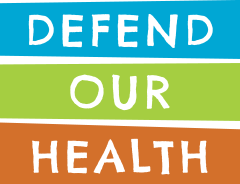Oh, Deer! Venison joins fish and beef on list of contaminated food in Maine
December 2, 2021 | General Updates, Safe Food | Tags: contaminated, deer, Maine, pfas, venison
Last week, news broke that deer in central Maine showed high levels of PFAS, followed by Department of Inland Fisheries and Wildlife deer hunting advisory not to eat any venison harvested in the Fairfield area and to discard any deer killed there earlier in the season. The news shocked and angered many Maine hunters.
But this revelation is just the tip of the iceberg. PFAS is a much larger problem in food – affecting all Mainers, whether they get food from the woods or from the store. And right now, PFAS in food is a problem that’s largely being neglected.
Early reports suggest that the deer advisory is based on a small sample of eight deer in Fairfield; the state has not yet tested deer in other potentially contaminated areas. When they do, it’s very likely that they’ll find PFAS-contaminated deer in other parts of the state.
Deer are not the only wild food known to have dangerous levels of PFAS. Earlier this year, we wrote about PFAS-contaminated fish in Maine waters; the state continues to maintain that PFAS in fish doesn’t warrant a separate advisory, leaving Mainers in the dark about all the problems with wild-caught fish.
This lack of information and transparency is in no way confined to fish and game. Farmed food in Maine is known to contain PFAS too. We know that alarming levels of PFAS have been found in Maine-produced milk and beef from animals raised on farms that used sludge as fertilizer. We know almost nothing about whether this contamination also extends to Maine-grown produce. Yet, Maine’s Department of Agriculture, Conservation, and Forestry has refused to systematically test food grown and raised on Maine farms that have used sludge, a crucial step in their job of regulating and evaluating food for health and safety. The process of finding contaminated dairy relies on testing a limited sample of milk that’s already on grocery store shelves, and each jug of milk can potentially be a mix from multiple farms with varying levels of contamination; we’ve written previously about why that’s a big problem. There’s a lot of concern about the economic implications of testing and finding PFAS at additional farms, but testing is an absolutely necessary part of understanding how PFAS contamination is affecting the health of Maine farmers and consumers.
In the last few years, we’ve made significant progress in creating a framework to get PFAS out of products, and hopefully, the state will act quickly to make sure new regulations are enforced. Getting PFAS out of industries, homes, and landfills is a crucial first step to keeping a check on future contamination. But until then, we must proactively evaluate PFAS entering our food, and now – that includes testing more products from potentially impacted farms as well as fish and game.
